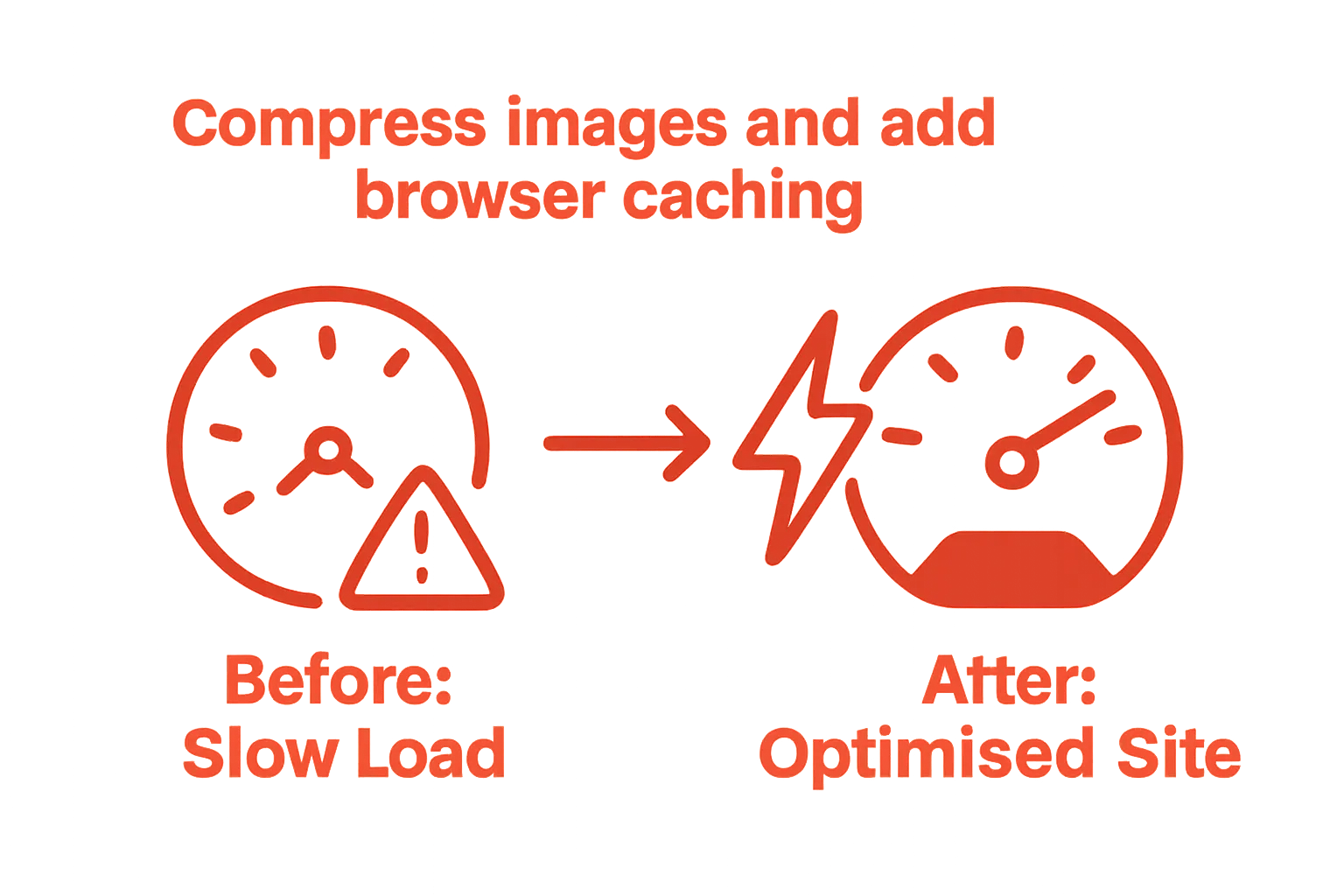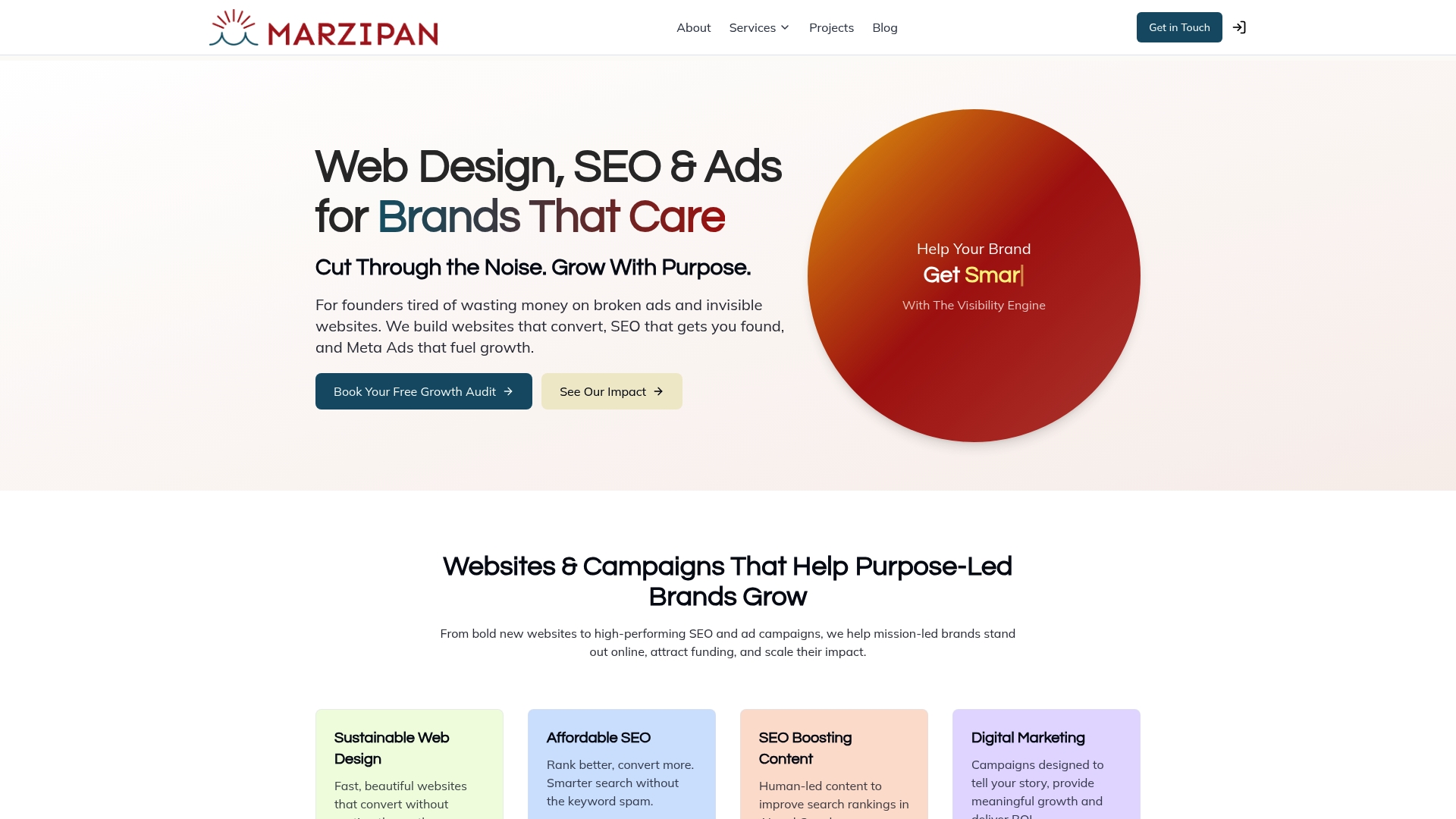How to Optimise Website SEO for Maximum Visibility
Optimising your website for search engines sounds complex. There are hundreds of factors that influence your rankings but did you know that pages loading even one second slower can reduce conversions by up to 20 percent. Many assume SEO is just about sprinkling keywords around and waiting. The truth is a successful strategy starts with precise audits, targeted research, and ongoing improvement that most miss entirely.
Table of Contents
- Step 1: Conduct A Comprehensive Seo Audit
- Step 2: Research Target Keywords Effectively
- Step 3: Optimise On-Page Seo Elements
- Step 4: Enhance Website Loading Speed
- Step 5: Build Quality Backlinks Strategically
- Step 6: Monitor And Adjust Seo Performance Regularly
Quick Summary
| Key Point | Explanation |
|---|---|
| 1. Conduct a thorough SEO audit | Use tools like Google Search Console to assess your website’s technical health and identify areas for improvement. |
| 2. Perform effective keyword research | Utilize tools such as Google Keyword Planner to find relevant keywords that match user intent and search trends. |
| 3. Optimize on-page SEO elements | Refine title tags, meta descriptions, and headings to improve clarity, relevance, and user engagement on each webpage. |
| 4. Enhance website loading speed | Use tools like Google PageSpeed Insights to identify performance issues, focusing on image optimization and caching to speed up load times. |
| 5. Build quality backlinks strategically | Focus on acquiring links from authoritative sites through guest posting and creating valuable content to enhance your website’s credibility. |
Step 1: Conduct a Comprehensive SEO Audit
Starting your website’s SEO optimisation journey requires a thorough and systematic approach. A comprehensive SEO audit serves as the foundational diagnostic tool that reveals your website’s current performance, hidden opportunities, and potential technical barriers preventing optimal search engine visibility.
Begin by selecting a robust SEO analysis tool that provides deep insights into your website’s technical health. Google Search Console is an excellent free option that offers comprehensive data about your site’s search performance. You’ll want to examine critical metrics such as crawlability, indexing status, mobile responsiveness, and current search rankings.
The audit process involves meticulously reviewing multiple interconnected website elements. Page loading speed represents a crucial factor that directly impacts user experience and search engine rankings. Use tools like Google PageSpeed Insights to evaluate your website’s performance across desktop and mobile platforms.
 Aim to identify and resolve any technical impediments that might slow down page rendering, such as unoptimised images, excessive JavaScript, or inefficient server configurations.
Aim to identify and resolve any technical impediments that might slow down page rendering, such as unoptimised images, excessive JavaScript, or inefficient server configurations.
read our free SEO audit guide which provides a step by step breakdown of what to analyse during this critical initial phase. When conducting your comprehensive audit, pay special attention to these key diagnostic areas:
- Current organic search rankings
- Website technical infrastructure
- Content relevance and quality
- Internal and external linking structures
- Mobile compatibility
Successful SEO audits require both analytical precision and strategic thinking. Beyond collecting data, you must interpret the insights to develop targeted improvement strategies. Look for patterns in search console data that indicate potential content gaps, technical limitations, or opportunities for targeted optimization.
The following table summarises essential SEO audit tools and their primary purposes, helping you choose the right resources for a comprehensive website analysis.
| Tool | Main Purpose | Notable Features |
|---|---|---|
| Google Search Console | Website technical health & performance review | Indexing, crawl stats, ranking data |
| Google PageSpeed Insights | Assess and optimise page loading speed | Mobile/desktop scores, suggestions |
| SEMrush | SEO auditing & competitive analysis | Technical audit, keyword tracking |
| Ahrefs | Backlink and content gap analysis | Backlink profile, competitor links |
| Chrome DevTools | Diagnose technical and performance issues | Load speed, resource breakdown |
Remember that an SEO audit is not a one time event but an ongoing process of continuous improvement. Regular quarterly reviews will help you stay ahead of evolving search engine algorithms and maintain your website’s competitive digital positioning.
Step 2: Research Target Keywords Effectively
Keyword research transforms your SEO strategy from guesswork into a precision-driven approach. This critical step helps you understand exactly what potential customers are searching for, allowing you to craft content that directly answers their queries and meets their informational needs.
Begin by brainstorming core topics relevant to your business and target audience. Consider the specific language and phrases your potential customers might use when seeking solutions your website offers. Understand user intent is paramount identifying whether searches are informational, navigational, or transactional helps you align your content strategy more effectively.
explore our advanced SEO intelligence tools to streamline your keyword discovery process. Professional keyword research involves multiple strategic layers. Utilise tools like Google Keyword Planner, SEMrush, or Ahrefs to uncover search volumes, competition levels, and potential keyword opportunities. Look beyond simple search numbers and examine metrics such as keyword difficulty, click through rates, and organic competition.
Effective keyword research according to expert SEO analysis requires a nuanced approach that balances several critical factors:
- Search volume and user demand
- Keyword relevance to your specific business
- Competition and ranking difficulty
- Potential commercial value of the keyword
Expand your keyword strategy by exploring long tail keywords that represent more specific search queries. These typically have lower competition and higher conversion potential. For instance, instead of targeting a broad term like “digital marketing”, consider more specific phrases like “affordable digital marketing services for small businesses in Sydney”.
Verify your keyword research by cross referencing multiple tools and examining actual search result pages.
Pay attention to the types of content currently ranking for your target keywords. This analysis provides insights into user expectations and helps you develop content that can potentially outperform existing search results.
Remember that keyword research is not a one time task but an ongoing process. Search trends evolve continuously, so regularly updating your keyword strategy ensures your content remains relevant and competitive in the dynamic digital landscape.
Step 3: Optimise On-Page SEO Elements
On-page SEO represents the critical foundation of your website’s search engine performance. This step involves strategically refining individual webpage elements to communicate clearly with search engines and provide exceptional user experience. Your goal is to make each webpage a precise, compelling answer to specific user queries.
Start by crafting compelling title tags that accurately represent your content’s core purpose. These should be concise, typically 50-60 characters long, and include your primary target keyword. Your meta description acts as a mini advertisement in search results, so write a persuasive 150-160 character summary that entices users to click through while naturally incorporating relevant keywords.
learn more about sustainable web design and understand how strategic content placement impacts search rankings. Heading structure plays a significant role in on-page optimization. Use a clear hierarchical approach with one H1 tag representing the page’s main topic, followed by H2 and H3 subheadings that break down content logically. This not only improves readability but helps search engines understand your content’s structure.
According to Google’s content guidelines, creating genuinely helpful content is paramount. Focus on addressing user needs comprehensively, avoiding keyword stuffing or manipulative tactics. Ensure your content provides clear, actionable information that directly answers potential user questions.
Key on-page optimization strategies include:
- Using descriptive, keyword-rich URLs
- Optimising image alt text
- Creating internal links between related content
- Ensuring mobile responsiveness
- Maintaining fast page loading speeds
Incorporate your target keywords naturally within the content, prioritising readability and user experience over mechanical keyword placement. Aim to use keywords in the first 100 words of your content, within headings, and strategically throughout the text.
This checklist table helps ensure that critical on-page SEO elements are fully optimised for every webpage you publish.
| On-Page Element | Optimisation Criteria | Completed (Yes/No) |
|---|---|---|
| Title Tag | Primary keyword included, under 60 characters | |
| Meta Description | Persuasive, includes keywords, 150-160 chars | |
| Heading Structure | Logical H1, H2, H3 use, targets main topics | |
| URL Structure | Short, descriptive, keyword-rich | |
| Image Alt Text | Accurate, relevant to content | |
| Mobile Responsiveness | Renders properly on all devices | |
| Internal Linking | Links to related pages in site | |
| Page Loading Speed | Loads quickly (check with PageSpeed tools) |
Verify your on-page SEO by using tools like Google Search Console or SEMrush to track your webpage’s performance. Look for improvements in search rankings, click through rates, and user engagement metrics. Remember that on-page optimization is an iterative process requiring continuous refinement and attention to evolving search engine algorithms.
Step 4: Enhance Website Loading Speed
Website loading speed represents a critical factor in user experience and search engine rankings. Milliseconds matter when it comes to keeping potential visitors engaged and preventing them from abandoning your site before it fully renders. A sluggish website not only frustrates users but can significantly damage your search engine visibility and conversion potential.
Start by conducting a comprehensive performance assessment using tools like Google PageSpeed Insights or GTmetrix. These platforms provide detailed diagnostics about your website’s current loading performance and offer specific recommendations for improvement. Image optimization emerges as one of the most impactful areas for speed enhancement. Compress all images using tools like TinyPNG or WebP conversion, ensuring you maintain visual quality while dramatically reducing file sizes.

explore our sustainable web design approach which prioritises performance and efficiency. Browser caching represents another powerful technique for accelerating website load times. Configure your server to store static resources like CSS, JavaScript, and image files temporarily on visitors’ devices, reducing repeated download requirements. Implement browser caching through strategic HTTP headers or using content delivery networks that distribute your website’s assets across multiple global servers.
According to web performance experts, minimising render blocking resources is crucial for improving loading speed. Streamline your website’s code by:
- Eliminating unnecessary JavaScript and CSS files
- Leveraging asynchronous loading techniques
- Prioritising critical rendering path
- Implementing lazy loading for images and multimedia content
Consider upgrading your hosting infrastructure if your current provider cannot deliver consistent performance. Managed WordPress hosting or cloud hosting solutions often provide superior speed and reliability compared to standard shared hosting environments. Select a hosting provider with robust server infrastructure, SSD storage, and content delivery network integration.
Verify your website’s performance improvements by regularly monitoring key metrics such as first contentful paint, time to interactive, and total blocking time. Use tools like Chrome DevTools and Lighthouse to track progress and identify ongoing optimization opportunities. Remember that website speed optimization is an iterative process requiring continuous attention and refinement.
Step 5: Build Quality Backlinks Strategically
Backlink building represents a nuanced art of establishing your website’s authority and credibility within digital ecosystems. Quality consistently trumps quantity when developing an effective backlink strategy. Search engines evaluate not just the number of links pointing to your website, but the relevance, authority, and trustworthiness of those linking domains.
Begin by conducting a comprehensive competitor backlink analysis. Identify websites already linking to similar content in your industry and develop a strategic approach to securing links from those high authority platforms. Use tools like Ahrefs or SEMrush to map out potential linking opportunities, examining the domain authority and relevance of prospective link sources.
Guest posting remains a powerful technique for acquiring meaningful backlinks. Craft exceptional, original content that provides genuine value to target websites in your industry. Focus on creating informative, data driven articles that showcase your expertise and naturally encourage editorial teams to link back to your original content. Personalise your outreach, demonstrating a clear understanding of each website’s content strategy and audience preferences.
explore our advanced SEO intelligence strategies to understand sophisticated link building techniques. Digital PR represents another sophisticated approach to earning high quality backlinks. Develop compelling, newsworthy content that industry publications and blogs would find interesting. Press releases, original research, and industry insights can attract natural editorial links from reputable sources.
According to link building experts, strategic backlink acquisition involves multiple sophisticated approaches:
- Creating linkable assets like comprehensive guides
- Participating in industry forums and discussions
- Leveraging broken link building techniques
- Developing relationships with industry influencers
- Producing original research and data
Avoid black hat link building tactics that might incur search engine penalties. Purchased links or automated link exchanges can severely damage your website’s reputation. Instead, focus on earning links through genuine value creation, relationship building, and producing exceptional content that naturally attracts editorial attention.
Verify your backlink strategy’s effectiveness by monitoring domain authority, referral traffic, and search engine rankings. Use tools like Google Search Console to track new linking domains and assess the quality of incoming links. Remember that building a robust backlink profile is a gradual, consistent process requiring patience and strategic commitment.
Step 6: Monitor and Adjust SEO Performance Regularly
SEO is not a set-it-and-forget-it strategy but a dynamic, continuous process of measurement, analysis, and refinement. Consistent performance tracking enables you to understand how your website performs in search results and identify opportunities for strategic improvement. Developing a systematic approach to monitoring your SEO metrics will help you stay ahead of algorithmic changes and competitive shifts.
Establish a regular monitoring schedule using comprehensive analytics platforms. Google Analytics and Google Search Console provide deep insights into your website’s search performance, revealing critical metrics like organic traffic, keyword rankings, click through rates, and user engagement. Set up custom dashboards that allow you to quickly assess your website’s performance and track progress against specific SEO objectives.
explore our SEO performance tracking guide to understand the nuances of effective digital performance monitoring. Pay close attention to core performance indicators that signal your SEO health. Organic traffic trends, average session duration, bounce rates, and conversion rates offer valuable signals about how effectively your content meets user expectations and search engine requirements.
According to Google Search Console documentation, regular performance monitoring involves strategic analysis across multiple dimensions:
- Tracking keyword ranking fluctuations
- Identifying and resolving indexing issues
- Monitoring organic search traffic trends
- Analyzing user behaviour and engagement metrics
- Checking mobile performance and compatibility
Implement a quarterly review process where you comprehensively evaluate your SEO strategy. During these reviews, compare current performance against baseline metrics, investigate any significant changes in search rankings, and develop targeted improvement strategies. Be prepared to experiment with content updates, technical optimisations, and strategic adjustments based on your analytical insights.
Utilise advanced SEO tools that provide competitive intelligence and trend analysis. Platforms like SEMrush, Ahrefs, and Moz offer sophisticated tracking capabilities that help you understand not just your own performance, but how you compare to competitors in your industry. Proactive monitoring allows you to anticipate and respond to emerging digital marketing trends, ensuring your website remains competitive and visible in search results.
Transform Your SEO Strategy Into Real Results
Is your website struggling with slow loading speeds, low organic visibility, or confusing on-page elements? You have just discovered how a robust SEO audit and sustainable optimisation can unlock your true ranking potential. If you want your mission led business to cut through the digital noise and stand out with both impact and integrity, you need a partner who understands every step of sustainable visibility—just like the strategies shared in this article.

Take action today. With Marzipan, you get expert SEO, ethical link building and website improvements that align with your values. Let us help you close performance gaps, build authority, and transform data into growth. Discover how our sustainable web design and SEO solutions can propel your brand to the top of Google. Do not wait to claim your competitive advantage—visit https://marzipan.com.au and get a free discovery session now.
Frequently Asked Questions
How does a comprehensive SEO audit help improve my website’s visibility?
A comprehensive SEO audit identifies your website’s strengths and weaknesses, revealing technical barriers and opportunities for optimisation that can enhance search engine visibility.
What tools should I use for keyword research in SEO?
Popular keyword research tools include Google Keyword Planner, SEMrush, and Ahrefs, which help identify search volumes, competition levels, and opportunities for effective keywords.
What are the key elements of on-page SEO that I need to optimise?
Key elements of on-page SEO include title tags, meta descriptions, heading structure, and the use of relevant keywords within content, which all contribute to improving search ranking.
How can I effectively monitor my SEO performance?
Monitoring SEO performance can be done using tools like Google Analytics and Google Search Console, which provide insights into organic traffic, keyword rankings, and user engagement metrics.







